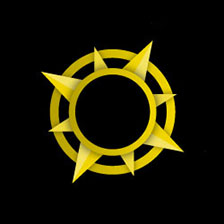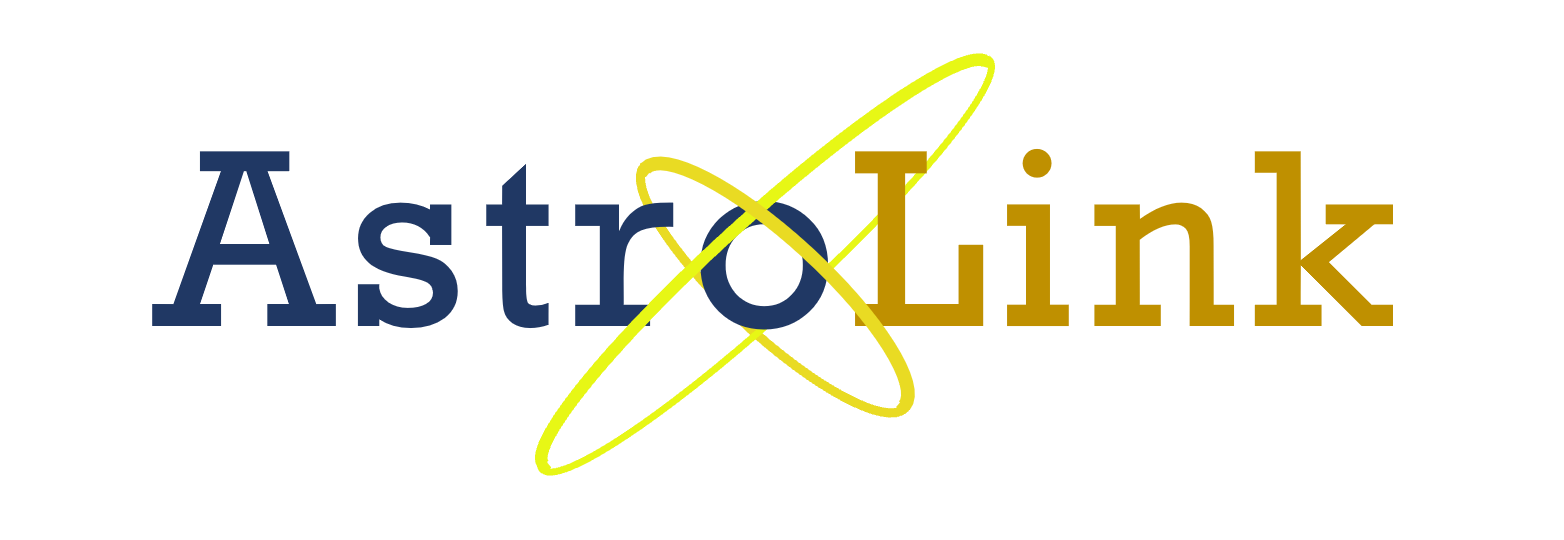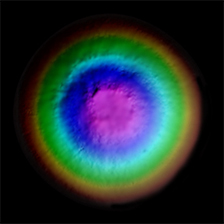Mars MRO CTX Global Mosaic Murray Lab v1
- Primary Authors
- James Dickson, Bethany Ehlmann, Laura Kerber, Caleb Fassett
- Publisher
- Planetary Data System
- Publication Date
- 2023-03-21
- Abstract
- The V01 release of the Global CTX Mosaic is comprised of 86,571 separate images acquired between 2006 and 2020. Overlapping images were registered to each other (semi-controlled) before blending. We provide details of the full data processing pipeline below. We emphasize transparency both in how the mosaic was generated and for users to understand where data in the mosaic come from. We have developed a Python-based pipeline that incorporates non-destructive image processing techniques that preserve all information about the original data that comprise the mosaic and map all seams. This connects the mosaic directly with its original data, ensures that blending artifacts are not mistaken for landforms and geologic contacts, and provides instant access to the raw data that comprise the mosaic. When using these data in a publication, presentation or poster, please acknowledge the hard work of the scientists and engineers at California Institute of Technology, Malin Space Science Systems, and the Jet Propulsion Laboratory. For scientific and technical overviews of the CTX instrument, please see Malin et al. (2007) and Bell et al. (2013). For more information see the original Caltech site. PDS DOI: 10.17189/m23v-ae12 References: Citation: Dickson, J. L., B. L. Ehlmann, L. Kerber, C. I. Fassett (2024). The Global Context Camera (CTX) Mosaic of Mars: A Product of Information-Preserving Image Data Processing. Earth and Space Science, 11 (7). DOI: 10.1029/2024EA003555. Malin, M., (2007). MRO Context Camera Experiment Data Record Level 0 V1.0, MRO-M-CTX-2-EDR-L0-V1.0, NASA Planetary Data System, https://doi.org/10.17189/1520266.
- Purpose
- Image mosaics of planetary surfaces are essential for both engineering and scientific tasks. A community focus has been aimed at maximizing the engineering value of mosaics, including adoption of the term "foundational" to describe the role mosaics play as datasets upon which other products can be reliably placed. Less work has been done to increase the intrinsic scientific value of image mosaics themselves, of particular importance for CTX, which provides the highest-resolution coverage of > 90% of the surface of Mars.
Contact and Distribution
- Format
- Archive, Data, Global Mosaic, Grey Scale, Image, Merge, Raster Data, Remote-sensing Data
- Access Constraints
- None
- Access Scope
- PDS
- Use Constraints
- Please cite authors
- Edition
- 1
- Edition Name
- version
- Supplemental Information
- https://murray-lab.caltech.edu/CTX/
- Native Data Set Environment
- ESRI Arcinfo, GDAL
- Astrogeology Theme
- Cartography, Geographic Information System (GIS), Geomorphology, Geophysical, Image Processing, Remote Sensing, Terrestrial planets
- Mission Names
- Mars Reconnaissance Orbiter
- Instrument Names
- CTX
- Digital Product?
- yes
- Online Package Link
- https://astrogeology.usgs.gov/search/map/mars-mro-ctx-global-mosaic-murray-lab-v1
- External File Size
- 4x4 degree tiles
- Online File Link
- https://murray-lab.caltech.edu/CTX/V01/tiles/
- Access Instructions
-
The Global CTX Mosaic is available in a variety of ways, accounting for the range of applications that we anticipate. We describe these avenues below. If you are developing a platform that uses the mosaic, please contact us to have it listed in the Access Section. For example, Explore the mosaic in full resolution and draped over topography in a web browser from here.
For scientific use, we recommend downloading the individual tiles for your study site or downloading the entire mosaic. The entire uncompressed mosaic can be found here.
The mosaic images are stored in zip files that reduce the download size. The entire mosaic (compressed) is 5.6 TB, including seam maps but not including overviews for the GeoTiff files. Unzipped and uncompressed, the entire mosaic is 11.484 TB, including overviews. Assuming a 5 mb/s download speed, the entire mosaic will take 13 days to download. All tiffs are uncompressed and all vector files (seam maps and tie points) are provided as shapefiles. We encourage you to download the entire mosaic if you want but ask that you only download one tile at a time to preserve bandwidth for other users.
Tiles are named based upon the location of the lower-left pixel. Therefore, E040_N16 covers 40°-44° east longitude and 16°-20° north latitude.
Each zip file contains the following files: - MurrayLab_CTX_V01_${tile}_Mosaic.tif (Uncompressed GeoTiff of the mosaic for this tile). - MurrayLab_CTX_V01_${tile}_SeamMap.shp (Polygon map of image seams and source data). - MurrayLab_CTX_V01_${tile}_TiePoints.shp (Point map of image-to-image registration points). - MurrayLab_CTX_V01_${tile}_DataSheet.pdf (Rendered version of the mosaic to show how data should appear). - MurrayLab_CTX_V01_${tile}_ReadMe.txt (Text file with detailed information about all contents).If you are streaming the image mosaic so only need to download seam maps, they can be found here. The image-to-image tie points can be found here.
- Contact Address
- 2255 N. Gemini Drive
- Contact City
- Flagstaff
- Contact State
- AZ
- Contact Postal Code
- 86001
Data Status and Quality
- Time Period of Content (start)
- 2018-12-01
- Time Period of Content (stop)
- 2020-07-30
- Currentness Reference
- Ground condition
- Progress
- Complete
- Update Frequency
- None planned
- Logical Consistency
- For more see the section Where the Data Come From. All images are registered to each other, with tie points and residuals included as point shape files with all tiles. Data were also registered to controlled basemaps. Absolute errors are all under 200 meters and were greater at higher latitudes than at the equator.
- Completeness Report
- The final CTX mosaic covers > 99.5% of the surface of Mars between 88°S and 88°N. It is comprised of 86,571 separate images co-registered by 3,147,169 control points. Our automated image-to-image registration worked well on most of the planet but struggled in the mid-latitudes, particularly the southern mid-latitudes where increased clouds hampered feature-matching. The seam-correction algorithm successfully generated 4,969,287 separate polygonal features within the mosaic, with each feature hosting all metadata for the original orbit and links to raw and non-blended versions of the data underlying. This permits direct comparison of the mosaic to its source to verify observations.
- Process Description
-
The Global CTX Mosaic was constructed in four main stages: 1. Image-to-Image registration. 2. Tile-to-tile registration. 3. 4°x4° tile generation. 4. Tile blending.
For more see the section Where the Data Come From
Lineage
- Process Date
- 2023-03-21
- Source Name or Organization
- Planetary Data System
- Source Publication Date
- 2020-07-30
- Source Title
- The CTX Experiment Data Record (EDR) Archive
- Source Online Linkage
- https://doi.org/10.17189/1520266, https://pdsimage2.wr.usgs.gov/Individual_Investigations/mars_mro_ctx_globalmosaicv01_murraylab_2023/
- Source PDS Archive
- Mars Reconnaissance Orbiter
- PDS Status
- PDS 4 Archived
- Type of Source Media
- Online
- Horizontal Positional Accuracy Report
- Accurate to Control Net
- Entity and Attribute Linkage
- https://murray-lab.caltech.edu/CTX/
Geospatial Information
- Target
- Mars
- System
- Mars
- Minimum Latitude
- -88
- Maximum Latitude
- 88
- Minimum Longitude
- -180
- Maximum Longitude
- 180
- Direct Spatial Reference Method
- Raster
- Object Type
- Pixel
- Bit Type (8, 16, 32)
- 8
- Radius A
- 3396190
- Radius C
- 3396190
- Control Net
- MOLA
- Bands
- 1
- Pixel Resolution (meters/pixel)
- 5
- Horizontal Coordinate System Units
- Meters
- Map Projection Name
- Equirectangular
- Latitude Type
- Planetocentric
- Longitude Direction
- Positive East
- Longitude Domain
- -180 to 180



















